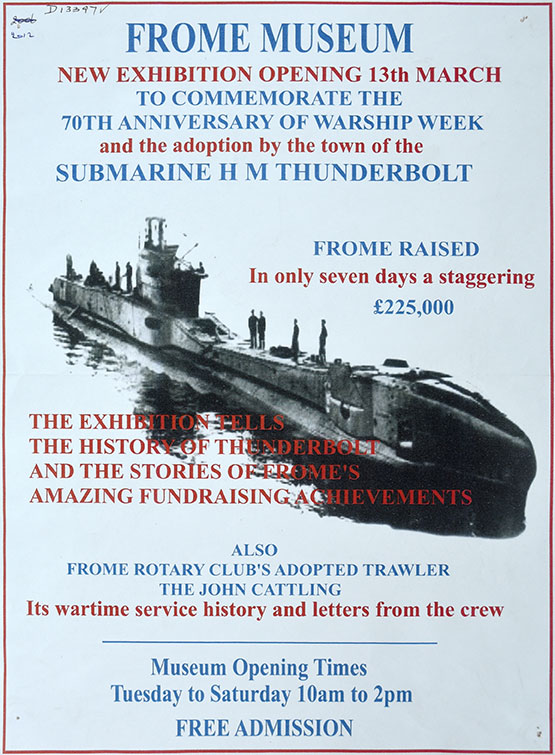
 HMS MONTROSE
HMS MONTROSEFrome UDC in Somerset adopted
the submarine HMS Thunderbolt and
the "Scott Class" Flotilla Leader HMS Montrose
Warships Week 14 - 21 February 1942
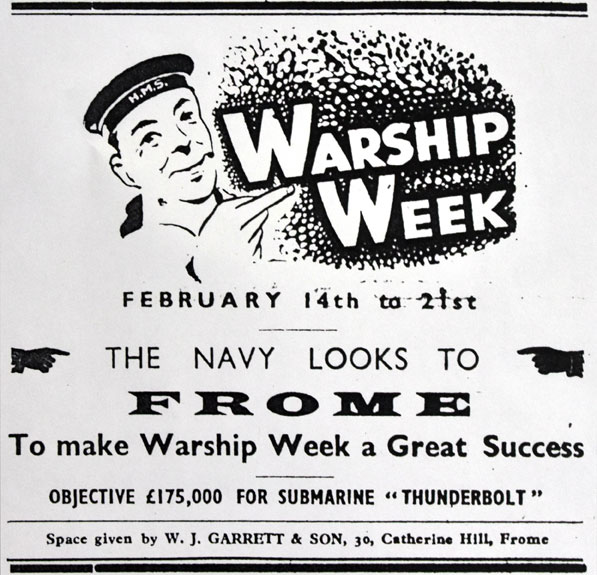
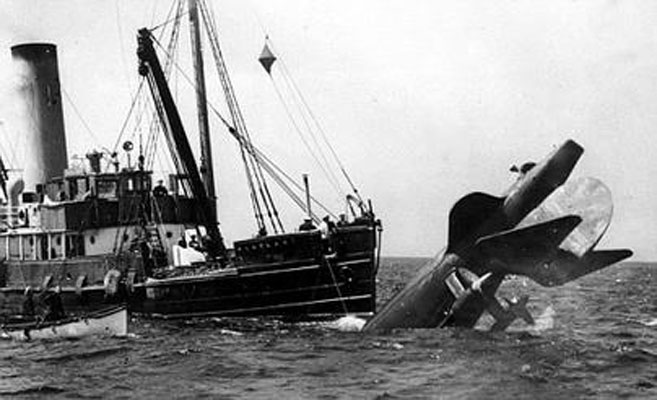 The stern of HMS Thetis (N25) emerges from the water as she is raised by the salvage vessel Vigilant
|
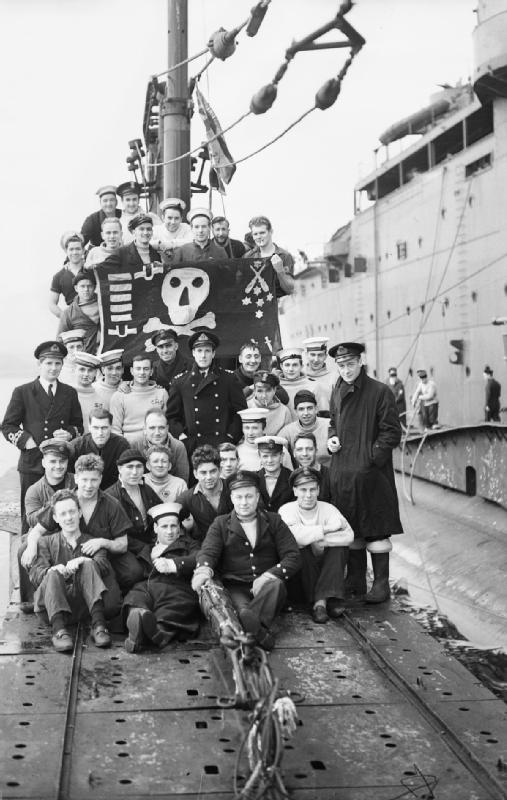 The crew after a patrol in the Med
|
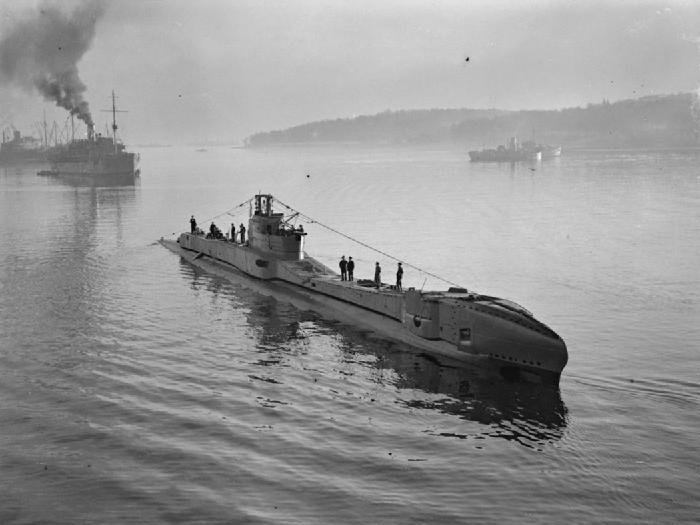 HMS Thunderbolt (N25) returning from patrol
|
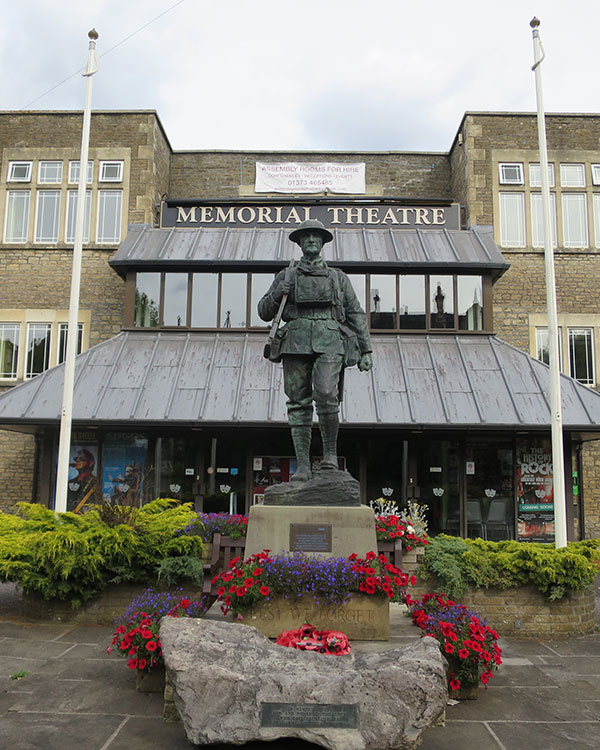
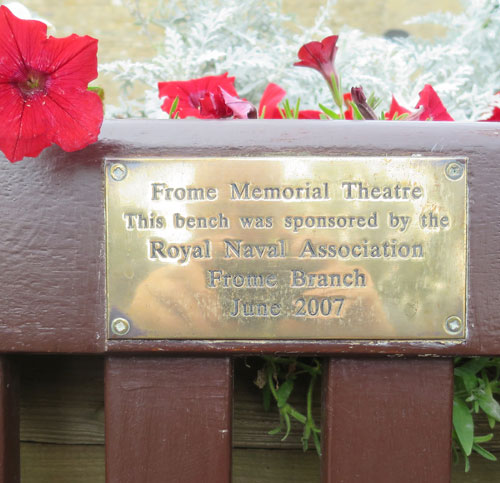
|
HMS Thunderbolt
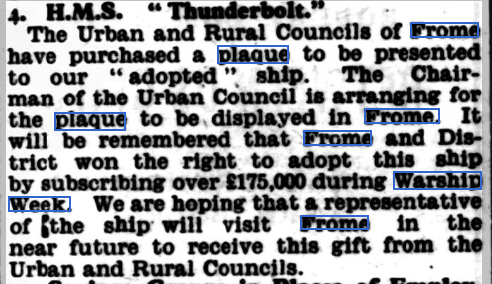 Somerset Standard 18 December 1942
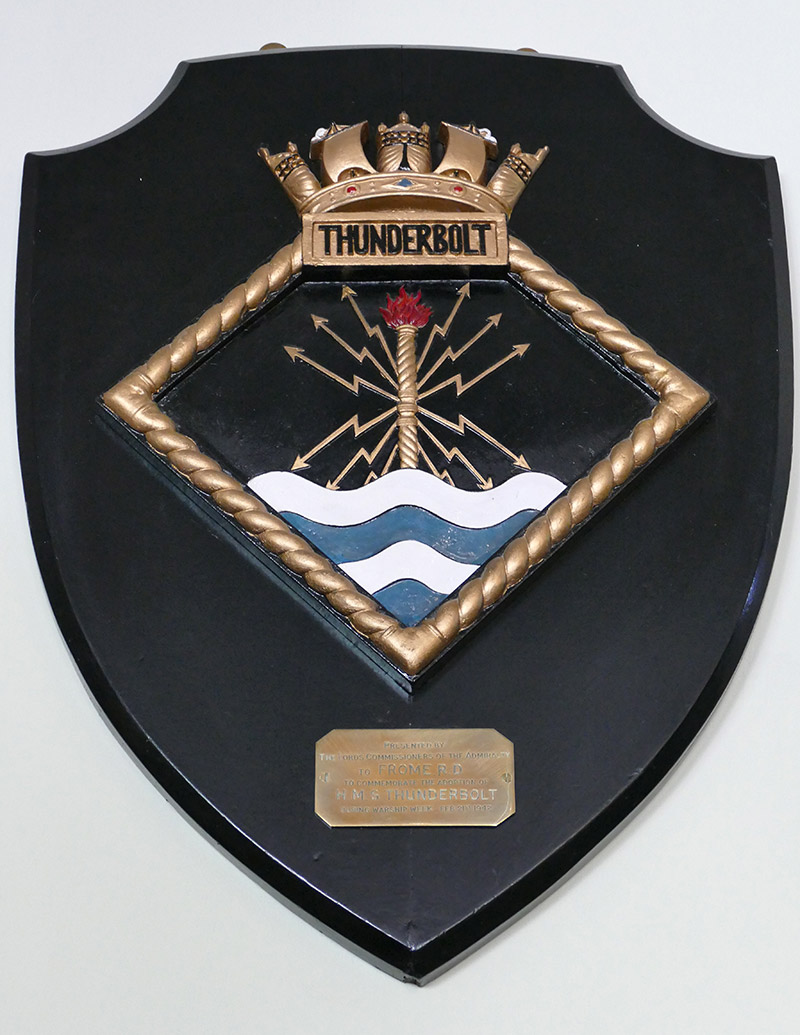 The plaque presented to Frome Rural District Council Photograhed by Richard Lines, Frome Memorial Theatre 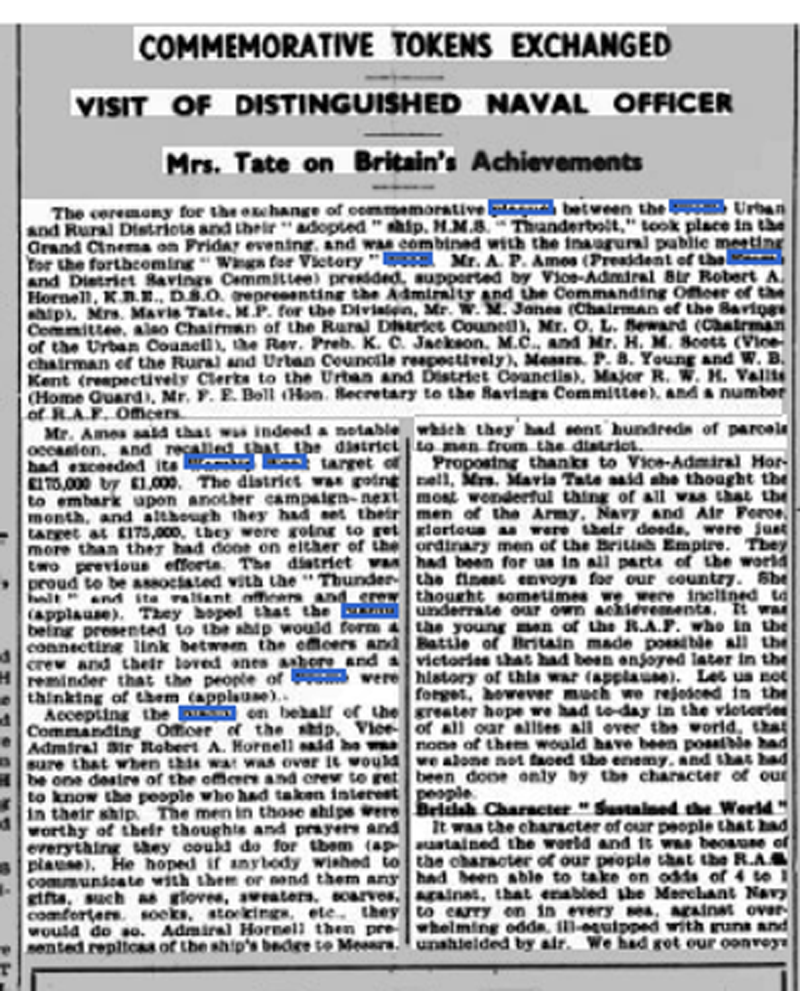 Somerset Standard 19 March 1943
Click to enlarge 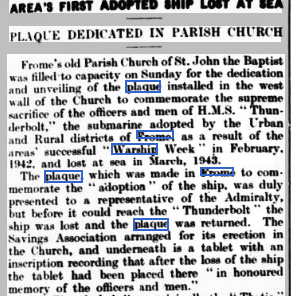 Somerset Standard 24 November 1943 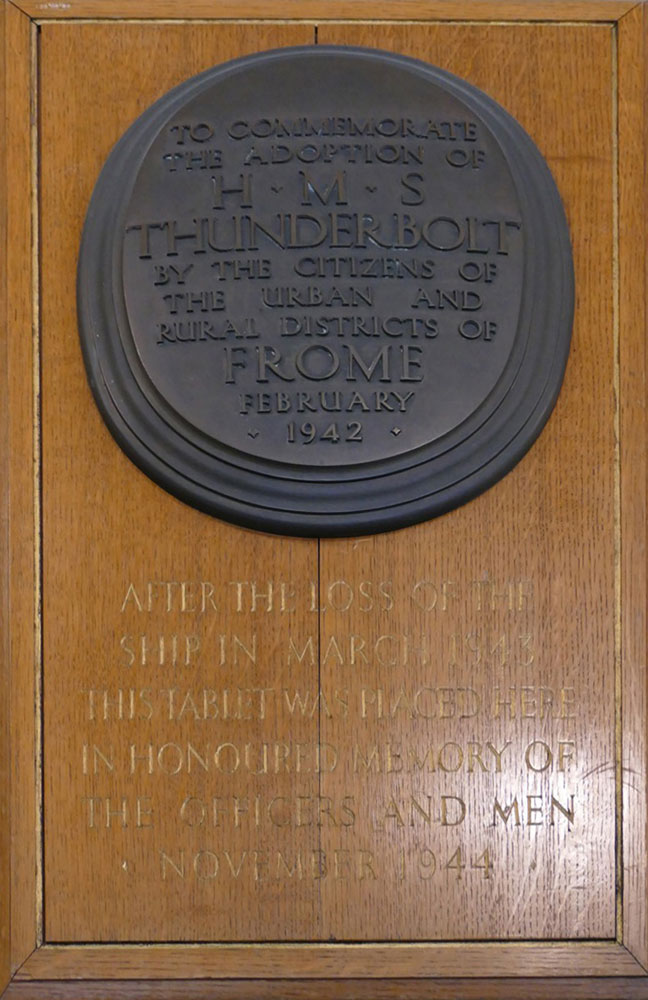 The plaque presented by Frome to HMS Thunderbolt was mounted on wood hung in the Parish Church click image to enlarge Photographed by Richard Lines, Frome Memorial Theatre |
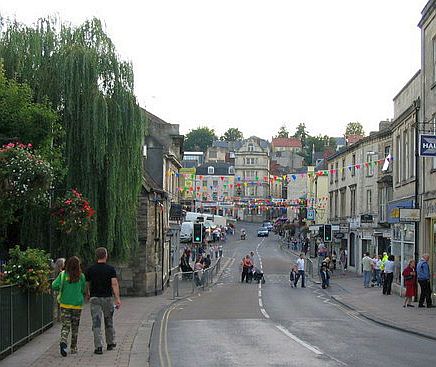 Market Place, Frome Wikipedia The adoption of HMS Thunderbolt
HMS Thetis was a T Class submarine named after a minor goddess of the sea, the leader of the fifty Nereides. She was the second in her Class, built by Cammel Laird at Birkenhead. On 1 June 1939 she was undegoing final diving trials in Liverpool Bay with 103 men aboard (twice her crew of 55) when a torpedo tube in the bow flooded. Only five of the 105 men aboard escaped through the single man escape hatch. She was grounded on Anglesey the day war was declared and repaired and commissioned as HMS Thunderbolt in 1940. HMS Thunderbolt (Lt. Cecil B. Crouch, RN) was adopted by Frome when the Urban and Rural District Councils raised £176,000 during their Warship Week from 14 - 21 February 1942. The Somerset Standard reported the presentation of plaques by Vice Admiral Sir Robert A Hornell, KBE, DSO to the Councils in the Grand Cinema on Friday 12 March 1943 and the presentation of a plaque from the Councils to the Admiralty. The opportunity to install the plaque in Thunderbolt never arose and non of her officers visited Frome. In Autumn 1942 Thunderbolt was converted to carry two "Chariots", a type of manned torpedo and their crews, for operations against Axis shipping in Mediterranean harbours. Their first mission, Operation Principal, in December 1942 was not a success but in January 1943 the manned torpedoes entered Palermo harbour and mined the unfinished light cruiser Ulpio Traiano and the freighter SS Viminale. Six charioteers were captured and two others died. Only one chariot, along with its crew, was recovered. Thunderbolt was depth charged off Sicily by the Italian corvette Cicogna on 14 March 1943 and sunk in 4,430 ft of water with the loss of all hands but there is some doubt as to her fate and the mot detailed account lof her history is on uboat.net. Her loss was reported in the Somerset Standard on 24 November 1943 and the Savings Association arranged for the plaques to be displayed in the Parish Church of St John the Baptist "in honoured memory of the officers and men". The three plaques were on loan to the Submarine Museum for many years but are now on permanent loan to the Frome Memorial Theatre where they hang on public view in the foyer. The adoption of HMS Montrose The T Class submarine N25 was sunk for a second time within a year of her adoption by Frome. The Town Clerk of Frome UDC wrote to the Admiralty expressing the wish that Frome could be allocated a destroyer named after the town for adoption. The Admiralty replied that the destroyer HMS Montrose would be allocated to Frome. A letter was received from her CO Cdr W.J. Phipps OBE expressing his pleasure at the adoption. HMS Montrose was one of eight Admiralty Class Flotilla Leaders with Scottish names built and Commissioned in 1918. Four had been adopted by counties in Scotland during Warship Weeks. HMS Montrose was named after the Graham family from Montrose midway beteen Aberdeen and Dundee on Scotlands east coast. I was puzzled she was offered to Frome 500 miles south in Somerset but Montrose was in the County of Angus which adopted the destroyer HMS Duncan (D98) in its Warship Week from 25 April - 2 May 1942. Montrose had no connection to Frome but Cdr Phipps her CO had "local associations with Great Elm near Frome" (Somerset Standard 19 Nov 1943) and when he left in October 1943 to take command of HMS Limbourne the Navy appointed a Somerset man as his successor. Cdr Neville Rolfe's previous ship was HMS Mendip "in which I formed a very warm entente with the Mendip Hunt as well as with the townspeople of Shepton Mallet, by whom we were adopted" (Somerset Standard 26 November 1943). On Saturday 8 November CPO Ceceil Brake, Cox'on of Montrose, called in on the Chairman of the Council while on holiday in Bath. HMS Montrose played a prominent part in Operation Neptune, the D-Day Landings in Normandy. On D-Day she escorted Convoy ETL1 taking the “Desert Rats” to their landing beach, "As we left England we passed another convoy commaded by Lt Angus Graham RNVR, the Marquis of Graham (son of the Duke of Montrose) in HMS Ludlow. He had some pipers on the bridge to play the Montrose Skirl which gave us a heartening send-off." "Montrose had a humiliating end by being nearly cut in half by a Landing Ship Tank (LST) in fog off Normandy on our second or third trip, but we got both bits home;" (Cdr Guy Neville-Rolfe DSC). Her bell is owned by the son of her last Commanding Officer whose story is told on the Home Page for HMS Montrose. 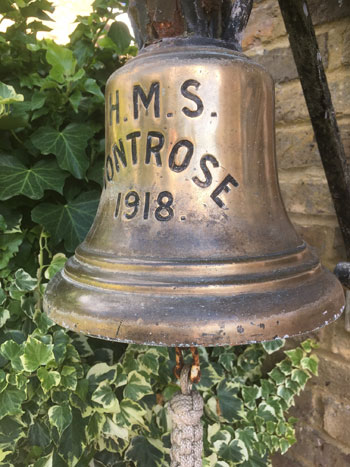 The bell of HMS Montrose
|
HMS Montrose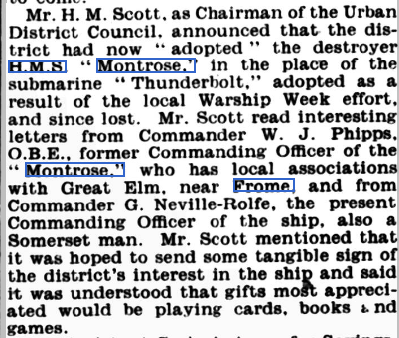 Somerset Standard 19 November 1943  Somerset Standard 26 November 1943
|
